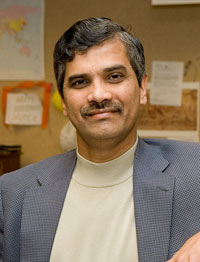
Sridhar Kota, the Herrick Professor of Engineering and a professor of mechanical engineering, founded his own company, Flexsys, thirteen years ago in Ann Arbor. Today, the revolutionary shape adapting technology developed by this corporation may likely influence the shape of the aviation industry itself.
Kota’s company focuses on developing and marketing compliant systems, which have the ability to jointlessly vary their geometrical design based on individual conditions and functions.
The airfoil technology, called FlexFoil, serves as a more effective and efficient upgrade from hinged wing flaps, universally employed by aircraft designers. FlexFoil features a jointless, elastic, and lightweight structure that, most importantly, optimizes control and performance of an aircraft’s wings. Additionally, the seamless technology can result in fuel savings of three to five percent on a Retrofit and eight to twelve percent on a Clean Sheet build.
In an article published by CBS News, Kota explained the potential fuel cost savings and their importance in the market today.
“The potential to save fuel is tremendous with the variable geometry wing,” Kota said. “There is the direct saving due to the reduction in drag provided by the adaptive seamless surface; but there is also a complementary gain in control authority and load-alleviation.”
The improved control surface will also reduce noise during take off and landing by up to forty percent. These logistics are further described by an explanatory video produced by Flexsys:
The shape-morphing aircraft wing design was introduced to the commercial market at The American Institute of Aeronautics and Astronautics Science and Technology Show, which began on January 13th. The show, which takes place in D.C., constitutes the world’s largest aviation aerospace conference, with over three thousand participants and audience members in attendance.
The Air Force has already conducted variable geometry tests on the new wing surface, but in July 2014, FlexFoil will make its first official test run on a Gulfstream business jet. NASA, along with the Air Force, will oversee the flight test.
Although the technology has gained the most recognition in the world of aviation, the flexible surfaces have a wider scope of applications, which include any structure that must make its way through a fluid medium. Other applications listed by the corporation include engine inlets, helicopter rotor blades, ships, wind turbines, hydrodynamic surfaces, and automobiles.
Professor Kota has been teaching at the University since 1987 and received his PhD in Mechanical Engineering from the University of Minnesota. From the University, he has received two Teaching Excellence Awards and a Mechanical Engineering Achievement Award, along with being named a Herrick Professor of Engineering. Additionally, he has received multiple Best Paper awards from the American Institute of Aeronautics and Astronautics.
